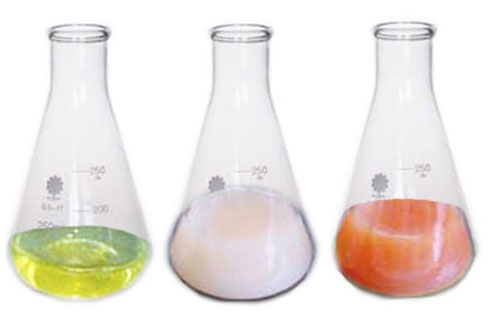Mohr method is one of the significant methods for determination of chloride in water. It is also known as Argentometric method. Chloride ion is a negatively charged ion. This method is appropriate for neutral or slightly alkaline water. Water sample is titrating against standard AgNO3 solution by using potassium chromate indicator. It is a precipitation titration method.
| Table of Contents: |
Sources of chloride in water
Generally, chloride ions are present in water as a different form of salts. The most common salts are NaCl, KCl, MgCl2 and CaCl2. They are extremely soluble in water. The Sources of chloride in water may be natural or human beings. The natural sources are surrounding rock or soil or seawater intrusion in coastal areas. Whereas, various human sources are fertilizers, road salting, wastewater from industries, animal feeds, septic tank effluents etc.
Limitation
The Mohr method for determination of chloride in water is a pH sophisticated method. It must be perform between the pH levels 6.5-9.0. It is better to carry out between the pH ranges 7-8. At upper pH level, the silver ions react with hydroxide ions and precipitated as silver hydroxide. In contrast, at lower pH level, potassium chromate may be converted into potassium dichromate (K2Cr2O7) and mask the end point. Consequently, accurate result cannot be obtained. If the water sample is acidic, then gravimetric method or volhard’s method is appropriate.
Ag+(aq) + OH–(aq) → Ag(OH)(s)
CrO42-(aq) → Cr2O72-(aq)
Theory of determination of chloride in water
The amount of chloride in water can be simply determined by titrating the collected water sample with silver nitrate solution by using potassium chromate indicator. The reaction is quantitative. The AgNO3 reacts with chloride ion in a 1:1 ratio. The result is expressed as ppm.
When silver nitrate solution is gradually added into the flask, then silver ions react with chloride ions and forms silver chloride. It is precipitated in bottom of the flask. The precipitation is white in color.
Ag+(aq) + Cl–(aq) → AgCl(s)
The end point of the titration takes place when all the chloride ions reacts and precipitated. Then slightly extra silver ions react with the chromate ions and form a brownish-red precipitate of silver chromate. The solubility product of silver chromate exceeded in the presence of additional silver ions, and then the precipitation occurs.
2Ag+

Apparatus:
Conical flask, burette with stand, pipette, measuring cylinder, volumetric flask, beakers, wash bottle.
Reagents:
Deionized water, water sample, standard N/50 silver nitrate solution, pH test paper, sodium hydroxide solution, nitric acid, Indicator potassium chromate solution.
Procedures:
- Measure the pH of the water sample. Adjust the pH with nitric acid or sodium hydroxide, if needed.
- Take a 25 ml collected water sample into a conical flask.
- Add 2-3 drops potassium chromate (K2CrO4) indicator. The color of the water sample is turn into light yellow.
- Add standard N/50 silver nitrate solution from the burette and shake well. Titrate until the light yellow color changes to permanent brownish-red color (bricks-red color) precipitate with white color precipitate.
- Note the volume of silver nitrate added.
- Repeat the titration for concordant values.
- Calculate chloride ion concentration
Chloride ion concentration (mg/l) = (VSN× NSN ×35.45) ×1000/Vw
Where: VSN = volume of titrant used, NSN is normality of silver nitrate, and Vw = volume of water sample used (ml)
NB: If the collected water contains massive amount of Chloride ions such as sea water. Then it needs to be dilute into a volumetric flask.
Observations and Calculations:
| Serial No | Volume of collected water sample (ml) | Burette readings (ml) | Volume of silver nitrate solution (ml) | |
|---|---|---|---|---|
| Initial | Final | |||
| 1 | ||||
| 2 | ||||
| 3 | ||||
Concordant Volume of silver nitrate solution, VSN = …. ml
Normality of standard silver nitrate solution, NSN = 0.02N
Volume of silver nitrate solution, VSN = ……… ml
Volume of collected water sample, Vw = ……. ml
Normality of collected water sample, Nw = ?
Now, Nw can be calculated from the following normality formula
Nw ×Vw = NSN × VSN
Or, Nw = NSN × VSN / Vw
Amount of Chloride ions = Nw × equivalent weight of chlorine
= Nw × 35.45 g/lit
= Nw × 35.45 × 1000 mg/lit or ppm
Result: The Amount of Chloride in water sample is ——- ppm
great
Well explained
What is the normality of potassium dicromate solutio
n
KCrO4 is an indicator to show the end of the reaction between cl- ions & Ag+
Thanks, it helps a lot
How can i standardize N/50 silver nitrate solution, what are the step by step procedures to achieve that. please help.
What should be the calculation if the sample needs to be diluted?
Same. Dilution with deionized water will not change the amount of chloride ions in solution.
Only if you use silver nitrate solution of 0.282N instead of 0.0282, then you must multiply by 10,000 instead of 1,000.
I DURING CHLORIDE TESTING TO STANDARD SILVER NITRATE WE USE SODIUM CHLORIDE OR OTHER AND ALSO EXPLAIN BLANK TITRATION TO COMPARE